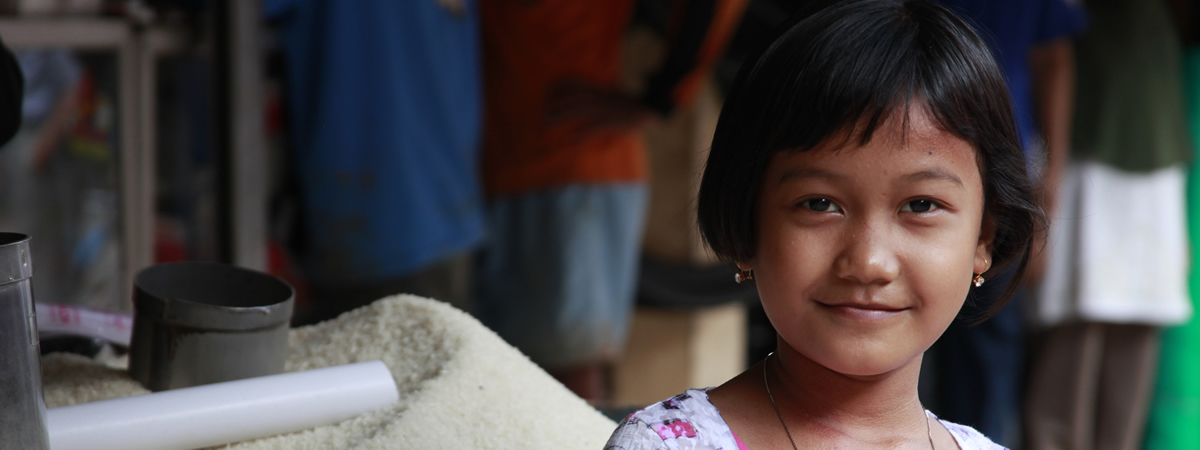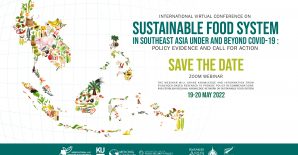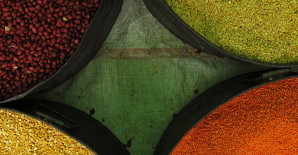Latest Policy Notes
The Ukraine war and its food security implications in Sri Lanka
Thibbotuwawa, Manoj; Dissanayake, Nimesha; Niwarthana, Sachini. Washington, DC 2023
Thibbotuwawa, Manoj; Dissanayake, Nimesha; Niwarthana, Sachini. Washington, DC 2023
DOI : 10.2499/p15738coll2.136591
Abstract | PDF (392.6 KB)
The Ukraine War has had major implications for food security and food systems across the world given the important role both Russia and Ukraine play in global food, fertilizer, and energy markets. Russia and Ukraine together supply about 12% of global agricultural exports on a caloric basis and over 30% of global wheat exports.1 Fertilizer and energy markets experienced rising prices and supply disruptions as well. The Russia-Ukraine conflict heavily impacted food security in Sri Lanka which is dependent on imports from the Caspian region. The impact of this shock has been compounded for Sri Lanka which has been suffering from a severe economic crisis due to a lack of foreign reserves, a debt default, high inflation, import restrictions, and shortages of critical goods and services. These compound crises have halted Sri Lanka’s progress on economic development and its achievement of the SDGs. Progress had been significant with the share of undernourished population declining from 16.7% in 2001 to 3.4% in 2020.2 During the same period the prevalence of stunting declined from 20.6% to 16%.3 The prevalence of wasting among children under age five declined from 15.9% in 2000 to 15.1% in 2016. Sri Lanka was ranked 65th out of 116 countries on the Global Hunger Index and 77th out of 113 countries on the Global Food Security Index in 2022 suggesting the need for some improvements in the food system. The latest food security assessment by the World Food Program (WFP) notes that about 30% of the population of 22 million (6.26 Mn people) are food insecure.4 Further, most households are regularly employing food-based coping strategies such as eating less preferred and less nutritious food and reducing the amount of food they eat. Further, an estimated 200,000 households are using emergency livelihood coping strategies that are likely to severely impact their income-generating activities and it is anticipated that more people are turning to these coping strategies as the crisis deepens. Against this backdrop, this policy brief explores the impacts of the evolving crisis in Ukraine on the nexus of poverty, agriculture, and food security in Sri Lanka and the possible avenues for mitigating the negative implica-tions of export restrictions, rising import costs, and inflation.
Synopsis: Improving agricultural productivity in Papua New Guinea: Strategic and policy considerations
Benny, Dickson; Benson, Todd; Ivekolia, Mark; Kedir Jemal, Mekamu; Ovah, Raywin. Washington, DC 2022
Benny, Dickson; Benson, Todd; Ivekolia, Mark; Kedir Jemal, Mekamu; Ovah, Raywin. Washington, DC 2022
DOI : 10.2499/p15738coll2.135003
Abstract | PDF (224.9 KB)
In a recent working paper, we examine staple and cash crop production yields in Papua New Guinea (PNG). In doing so, we assess the yield gap (difference between the crop yields farmers commonly obtain and what they might realize with optimal inputs and crop management) for the main staple food crops in PNG. The yield gap for sweet potato is the smallest (1/4 - 1/3 less than attainable yields), while banana shows the largest yield gap at about ¾ less than what might be achieved under intensive cultivation. In addition, we compare PNG agricultural output with areas of similar growing conditions in Indonesia to provide insight into potential investments to further spur agricultural productivity in PNG. Finally, we assess current sector policies in PNG that aim to support agricultural development as an engine for economic growth.
Synopsis: Rural household welfare in Papua New Guinea: Food security and nutrition challenges
Schmidt, Emily; Fang, Peixun; Mahrt, Kristi. Washington, DC 2022
Schmidt, Emily; Fang, Peixun; Mahrt, Kristi. Washington, DC 2022
DOI : 10.2499/p15738coll2.136320
Abstract | PDF (423.4 KB)
While a lot of development planning and policy attention has been dedicated to achieving dietary energy (i.e., calorie) adequacy to ensure food security and support greater household wellbeing, nutrition adequacy is also necessary to achieve improved human development indicators (e.g., improved educational attainment, decreased disease prevalence, and decreased child stunting prevalence). This study (explained in detail in the comprehensive working paper) calculates two poverty lines based on the costs that an individual faces in PNG to secure a diet consisting of foods typically consumed by poor households adjusted to align with a calorie threshold and healthy diet thresholds, respectively, together with modest non-food expenditures. Results suggest that over half of the sample households are unable to meet the necessary costs of ensuring an calorie equate modest food basket along with some basic non-food needs (Schmidt et al., 2022). Comparing the healthy diet poverty line to average household income suggests that attaining a nutritious, balanced diet while meeting other basic needs remains out of reach for nearly 4/5 of the rural sample households. Based on the study results, we identify 3 key interventions to improve food and nutrition security in vulnerable areas. First, PNG will continue to face disruptive climate events that quickly increase agricultural vulnerability and food insecurity in remote areas with limited market access and underdeveloped support services. The government of PNG in collaboration with development partners should pilot a series of social safety net programs that can assist vulnerable populations. These programs can be designed to build resiliency during non-shock seasons or years, such as improving livestock holdings, diversifying crop mix, investing in sustainable land management, and building agricultural production and other rural infrastructure for improved marketing and access to agricultural inputs. Second, a concerted effort is needed to promote the importance of nutrition at all levels of society. At the household level, training should aim to instill (for both men and women) the value of a costlier, but more nutritious diet. District and regional government officials, healthcare workers and other key stakeholders should be trained on methodologies to integrate nutrition programming into other development activities. High-level government dialogue and learning should aim to encourage greater coordination between local and federal government officials and across government departments to ensure improved nutrition outcomes for greater agricultural productivity and economic growth. Finally, PNG (both government and development partners) must invest in more timely data collection of key welfare indicators to inform nutrition targets and assistance programming.
Synopsis: Implications of public investments and external shocks on agriculture, economic growth and poverty in Papua New Guinea: An economywide analysis
Dorosh, Paul A.; Pradesha, Angga. Washington, DC 2022
Dorosh, Paul A.; Pradesha, Angga. Washington, DC 2022
DOI : 10.2499/p15738coll2.136347
Abstract | PDF (227.4 KB)
Policy simulations utilizing an economy-wide model based on PNG national accounts and survey data highlight the importance of linkages between the agricultural and non-agricultural sectors of the PNG economy.
There are potentially major benefits of increased agricultural productivity for national income and urban households. To reduce rural poverty, however, transport and processing costs must be lowered, as well.
Even if only half of the increase in foreign exchange earnings from the 2022 world energy price shock is absorbed into the PNG economy, the real exchange rate appreciates by 13 percent, reducing incomes from export crops. However, increased domestic demand for non-tradable crops contributes to a 10 percent income gain for the rural poor.
Using a portion of increased oil and natural gas revenues to finance new investments in crop agriculture, processing and transport, provides even greater benefits by spurring real GDP growth and raising real household incomes by an additional 2 to 4 percentage points.
A hypothetical carbon credit arrangement in which PNG reduces deforestation in exchange for funds used to finance cash transfers to the poorest 20 percent of both urban and rural households could raise the incomes of these groups by about 13 percent.
There are potentially major benefits of increased agricultural productivity for national income and urban households. To reduce rural poverty, however, transport and processing costs must be lowered, as well.
Even if only half of the increase in foreign exchange earnings from the 2022 world energy price shock is absorbed into the PNG economy, the real exchange rate appreciates by 13 percent, reducing incomes from export crops. However, increased domestic demand for non-tradable crops contributes to a 10 percent income gain for the rural poor.
Using a portion of increased oil and natural gas revenues to finance new investments in crop agriculture, processing and transport, provides even greater benefits by spurring real GDP growth and raising real household incomes by an additional 2 to 4 percentage points.
A hypothetical carbon credit arrangement in which PNG reduces deforestation in exchange for funds used to finance cash transfers to the poorest 20 percent of both urban and rural households could raise the incomes of these groups by about 13 percent.
Synopsis: Improving agricultural value chain coordination and gender inclusiveness in Papua New Guinea
Kosec, Katrina; Schmidt, Emily; Carrillo, Lucia; Fang, Peixun; Ivekolia, Mark; Ovah, Raywin. Washington, DC 2022
Kosec, Katrina; Schmidt, Emily; Carrillo, Lucia; Fang, Peixun; Ivekolia, Mark; Ovah, Raywin. Washington, DC 2022
DOI : 10.2499/p15738coll2.136351
Abstract | PDF (388.5 KB)
Maximizing efficiency throughout the entire agri-food value chain is critical to fostering greater economic growth and poverty reduction in Papua New Guinea (PNG). Investments in midstream value chain infrastructure (e.g., improved storage facilities, rural feeder roads, electricity, and cold storage transport) are crucial to strengthen linkages between producers and consumers. These investments should also promote inclusive development that benefits both men and women value chain actors. In this study, we analyzed three key value chains in Papua New Guinea—poultry, sweet potato, and fresh vegetables—aiming to guide policymakers and stakeholders toward ways to improve productivity, increase revenue, and bolster competitiveness and inclusiveness within the agriculture and livestock sectors.
The Ukraine war and its food security implications in Nepal
Bhatta, Astha. Washington, DC 2022
Bhatta, Astha. Washington, DC 2022
DOI : 10.2499/p15738coll2.136379
Abstract | PDF (270.2 KB)
Though declining in importance as Nepal undergoes structural transformation, agriculture still accounts for 23.9% of GDP and one in five people was employed in the sector with a larger share of women (33 percent) employed in agriculture than men (14.7 percent) (Labor survey of 2017-18). While not directly employed in agriculture, approximately 60 percent of the population has some engagement with the sector.
The Ukraine war and its food security implications for India
SJ, Balaji; Babu, Suresh Chandra. Washington, DC 2022
SJ, Balaji; Babu, Suresh Chandra. Washington, DC 2022
DOI : 10.2499/p15738coll2.136380
Abstract | PDF (411.9 KB)
Russia’s war on Ukraine shows no signs of subsidence. Its economic and societal adversities have already been felt worldwide but keep evolving, with food and energy being the most affected. Low-income, food-deficit nations importing from these two countries – many of which are in Northern Africa and Western and Central Asia – face critical challenges. The South Asian region, which has grappled with surging commodity prices and supply constraints even before the war, is likely to witness further inflation with rising food and oil prices. India is home to around 18% of the world’s population and accounts for 74% of the South Asian population. It is predicted to be the fastest-growing big economy this year. The country’s central bank (RBI) predicts that GDP will grow by 7.5% in FY 2022-23 (RBI, 2022), while many international organizations forecast growth between 6.4% and 8.2% (ADB, 2022; IMF, 2022; United Nations, 2022; World Bank, 2022). Still, in the wake of the ill effects of COVID-19, the country’s dependence on imports such as oil, fertilizers, and edible oils, and given surging domestic food and nonfood inflation in recent months, raises concerns about economic stability and possible interventions that might curtail fragility. The country consumes around 5 million barrels of crude oil daily but imports over 89% of its requirement from overseas. Crude oil prices have increased by 27% in just four months since the start of the war (February- June 2022). Edible oils have similarly increased, with palm and soybean oil prices rising by around 14% and 18%, respectively. The price of sunflower seed oil has increased by 42%, of which 86% originates from Ukraine and Russia. Fertilizer import dependency from the conflict regions is also sizeable. Russia was the 5th largest supplier of fertilizers to India in 2021-22, and Ukraine and Belarus were the 9th and 10th largest suppliers. The rise in prices of both finished fertilizers and fertilizer inputs has prompted the Government to double the fertilizer subsidy budgeted earlier this year. This policy brief investigates India's susceptibility to the war's disruptions and higher prices for commodities where import dependence is high. It then discusses potential income, food, and nutritional impacts on farmers, the poor, and the vulnerable. It also evaluates the Government’s policy measures such as subsidization, social safety nets, and trade diversification to reduce the impact of the war. Finally, it explores the market opportunities the conflict has created and the required structural reforms that would equip the country to handle such shocks in the future
Effects of COVID-19 on Papua New Guinea’s food economy: A multi-market simulation analysis
Diao, Xinshen; Dorosh, Paul A.; Fang, Peixun; Schmidt, Emily. Washington, DC 2020
Diao, Xinshen; Dorosh, Paul A.; Fang, Peixun; Schmidt, Emily. Washington, DC 2020
DOI : 10.2499/p15738coll2.134174
Abstract | PDF (133.9 KB)
Developments in the agricultural economy of Papua New Guinea have major impacts on household food consumption decisions. A household’s ability to produce and sell food is affected by climate and associated agricultural potential, market opportunities (domestic, import and export) and unexpected shocks. Each of these factors affects the overall food system, thereby influencing production and consumption of all food products and the markets in which they are traded. The COVID-19 pandemic has presented a challenge far more complex than an agricultural production shock, such as those due to El Niño or pests. Rather than directly affecting agricultural output and rural household welfare, the COVID-19 pandemic has affected economies across the globe via trade disruptions (logistic challenges; international trade barriers), social distancing policies (domestic food market and nonessential business closures), and transportation restrictions (road closures; air travel cancellations). The measures aimed to curb the spread of COVID-19 have affected household incomes via urban job losses, reduced market interaction, and dramatic changes in world food prices. While rice prices have increased, luxury food prices, such as for chocolate (i.e. cocoa), have decreased. PNG’s unique and highly varied biophysical landscape has shaped agricultural production patterns, outcomes, and livelihoods for centuries. Understanding how the PNG agrifood economy and resulting household consumption is affected by COVID-19 therefore requires attention to linkages and substitution effects across various products and the markets in which they are traded.
Evolution of agricultural mechanization in Vietnam: Insights from a literature review and multiple rounds of a farm household survey
Takeshima, Hiroyuki; Liu, Yanyan; Nguyen, Cuong Van; Masias, Ian. Washington, DC 2019
Takeshima, Hiroyuki; Liu, Yanyan; Nguyen, Cuong Van; Masias, Ian. Washington, DC 2019
Abstract | PDF (277.6 KB)
Vietnam has experienced rapid growth in agricultural mechani-zation lately; particularly in the use of tractors and combine-harvesters. A recent IFPRI study documented the evolution of the growth of mechanization in Vietnam based on an extensive review of the existing literature and several rounds of a nationally repre-sentative household survey. The level of tractor use in Vietnam was relatively high in the 1970s and the early 1980s but declined through the late-1980s before it started taking off again in the 1990s. The relatively high level of tractor uses up to the early-1980s were partly due to political and military reasons, as both the West and the Soviet Union gave substantial support in providing heavy machinery, including tractors. In this note, we focus on the evolution of mechanization from 1990s to 2000s.
Nepal’s 2072 Federal Constitution: What are the implications for governance of the agricultural sector?
Kyle, Jordan; Resnick, Danielle. Washington, DC 2018
Kyle, Jordan; Resnick, Danielle. Washington, DC 2018
Abstract | PDF (366.4 KB)
In September 2015, Nepal’s Constituent Assembly passed a new constitution aimed at transforming Nepal from a unitary country into a federal republic with three levels of government: the federation, the province, and the local level. This institutional shift will have wide-ranging social, political, and economic implications for the country. However, this brief focuses specifically on the implications of these federal reforms for the agricultural sector and the Ministry of Agriculture (MoAD). Agriculture is the backbone of the Nepali economy, providing a livelihood for approximately two-thirds of the population, contributing one-third of the country’s GDP, and constituting over half of its exports. With greater authority and autonomy granted to more subnational units of government, ensuring that the agricul-tural sector is guided by coordinated planning, retains sufficient human capacity, and receives adequate fiscal resources will be of para-mount importance during the transition to a federal republic. Consequently, this brief addresses how the sector can be restructured to meet the constitutional provisions while simultaneously ensuring that MoAD delivers on its agricultural objectives, especially those out-lined in its Agricultural Development Strategy (ADS).
1 to 10 of 38



